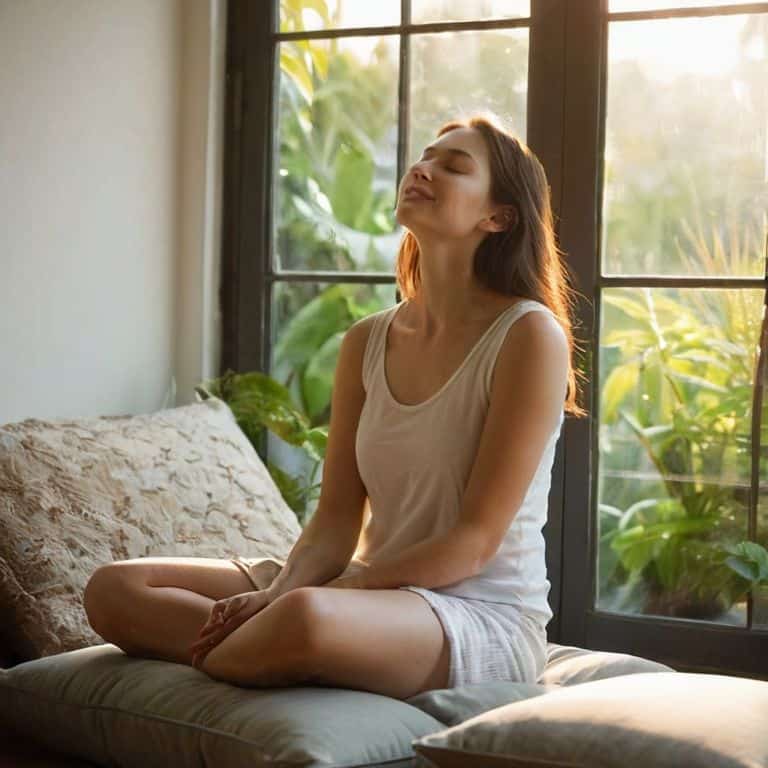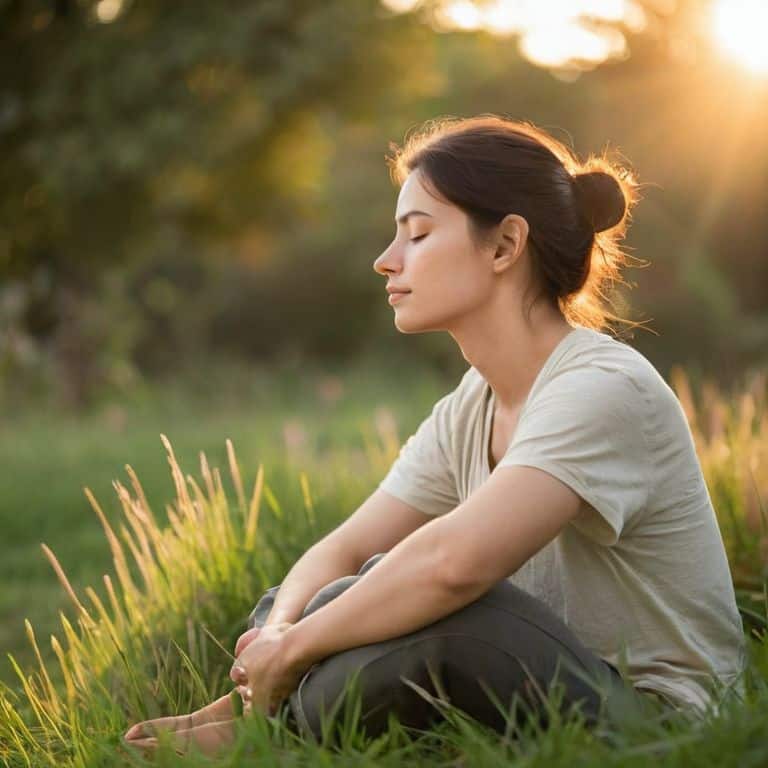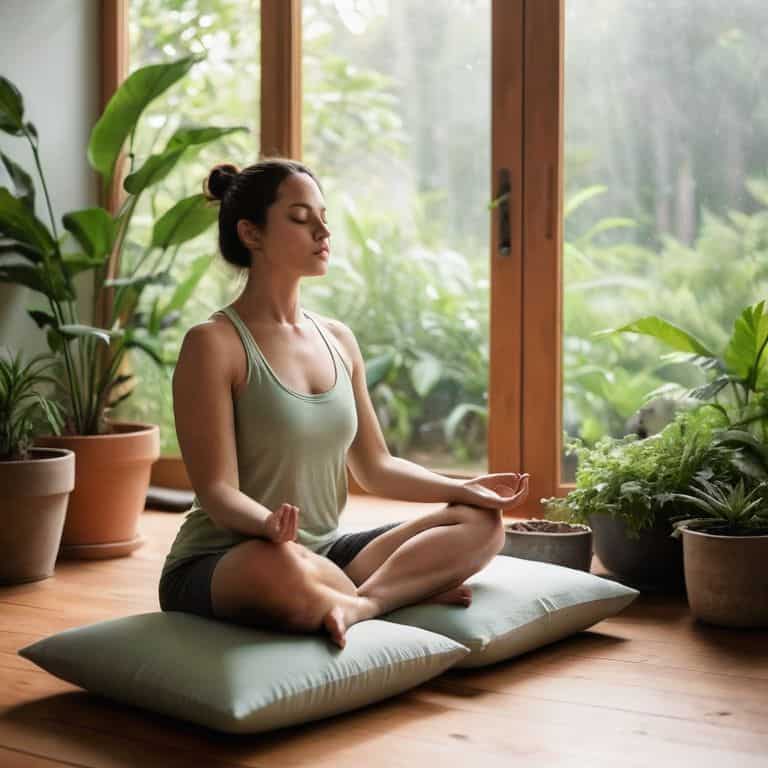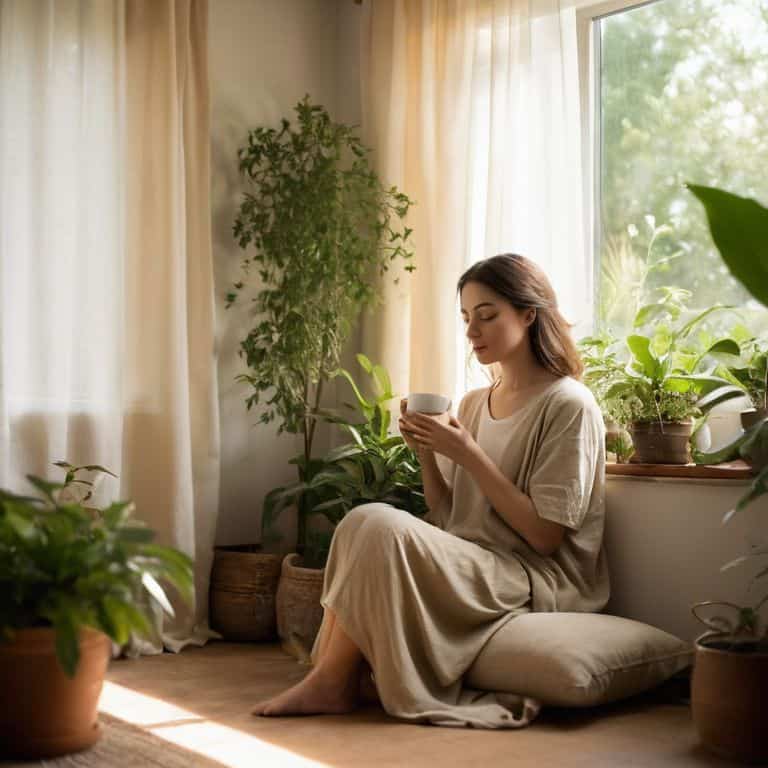As I sit in my Japanese rock garden, surrounded by the soothing sounds of nature, I’m reminded of the countless times I’ve heard people say that reducing stress is just a matter of “managing your time better” or “being more productive.” But I’ve found that this simplistic advice often falls short. The truth is, learning how to reduce stress is a deeply personal journey that requires patience, self-compassion, and a willingness to slow down. I’ve seen it in my own life, as a licensed therapist and mindfulness coach, and in the lives of my clients – that taking a few minutes each day to breathe, focus on the present, and connect with nature can be a powerful antidote to the chaos that often surrounds us.
In this article, I want to share with you some practical, no-nonsense advice on how to reduce stress in your daily life. I’ll offer you simple, evidence-based tools that you can use to cultivate a sense of calm and clarity, even in the midst of turmoil. You won’t find any quick fixes or magic solutions here, but rather a gentle, guided approach to finding peace in the present moment. My goal is to provide you with a clear, step-by-step path to reducing stress and increasing your overall sense of well-being, and to help you discover that finding peace is not something that happens overnight, but rather a journey that unfolds with time, patience, and practice.
Table of Contents
Guide Overview: What You'll Need

Total Time: 30 minutes to 1 hour
Estimated Cost: $0 – $10
Difficulty Level: Easy
Tools Required
- Journal (for writing down thoughts)
- Comfortable Pillow (for relaxation)
- Calming Essential Oil Diffuser (optional)
Supplies & Materials
- Herbal Tea (such as chamomile or peppermint)
- Meditation App Subscription (optional)
- Soothing Music Playlist (free or low-cost)
Step-by-Step Instructions
- 1. First, let’s start by acknowledging that stress is a natural part of life, and it’s how we respond to it that matters. To begin reducing stress, take a few minutes each day to sit comfortably, close your eyes, and focus on your breathing techniques. This simple act can help calm your mind and bring you back to the present moment.
- 2. Next, I recommend scheduling a daily walk outside, even if it’s just for 10 minutes. As someone who enjoys long-distance walking, I’ve found that being in nature has a profound effect on my mental well-being. It’s not about the distance; it’s about taking small steps towards calmness and allowing yourself to disconnect from distractions.
- 3. Now, let’s talk about the importance of self-care routines. Developing a consistent routine can help you feel more grounded and in control. This might include activities like meditation, yoga, or even simply taking a warm bath. The key is to find what works for you and make it a non-negotiable part of your daily self-care practice.
- 4. As a landscape watercolor painter, I’ve learned that creating something beautiful can be incredibly therapeutic. I encourage you to explore your creative side, whether that’s through painting, drawing, writing, or any other form of expression. The act of creating can help shift your focus away from stress and towards something positive and fulfilling.
- 5. It’s also essential to set healthy boundaries with others to protect your time and energy. Learning to say “no” without feeling guilty is a crucial step in reducing stress. Remember, taking care of yourself is not selfish; it’s necessary. By setting boundaries, you’re able to prioritize your own well-being and maintain healthy relationships.
- 6. Another vital step is to practice gratitude on a daily basis. Take a few minutes each day to reflect on the things you’re thankful for, no matter how small they may seem. Focusing on what you already have, rather than what’s lacking, can help shift your perspective and cultivate a more positive mindset.
- 7. Finally, I want to emphasize the importance of seeking support when you need it. Whether it’s talking to a trusted friend, family member, or mental health professional, don’t be afraid to reach out for help. Sometimes, just sharing your feelings with someone who cares about you can make a significant difference in how you’re feeling. Remember, you don’t have to face stress and anxiety alone; there are people who care about you and want to support you on your journey.
Simplifying Stress Reduction

As we explore ways to calm our minds, it’s essential to remember that mindfulness for beginners can be as simple as taking a few deep breaths. I often recommend starting with short breathing exercises for anxiety to help quiet the mind. By focusing on the sensation of the breath moving in and out of the body, we can begin to let go of worries about the past or future.
In addition to mindfulness practices, physical activities like yoga poses for relaxation can also be incredibly beneficial. These gentle stretches can help release tension from the body, allowing us to feel more grounded and centered. By incorporating these practices into our daily routine, we can begin to notice a significant shift in our overall sense of well-being.
To further support our journey towards calm, it’s crucial to prioritize stress relief through meditation and get enough importance of sleep for stress management. By making these habits a non-negotiable part of our daily routine, we can create a solid foundation for managing stress and anxiety. And, as I always say, a 10-minute walk can be a great way to clear your mind and gain a fresh perspective.
Mindfulness for Beginners Finding Calm
Mindfulness is about being present in the moment, just like a walk in nature. As I stroll through the woods, I notice the sounds, the sights, and the sensations in my body. It’s the same with mindfulness – we focus on our breath, our thoughts, and our feelings. For beginners, start small: take 5-10 minutes a day to sit quietly, breathe deeply, and observe your thoughts without judgment.
I like to think of mindfulness as tending to my Japanese rock garden – gently removing distractions, creating space for clarity. With regular practice, you’ll find calm in the chaos, just as a peaceful garden soothes the soul.
Yoga Poses and Breathing Exercises for Relaxation
As I often find solace in the gentle movements of yoga, I recommend exploring simple poses like child’s pose or downward-facing dog to calm the mind and body. These poses can help reduce tension and promote relaxation. Additionally, conscious breathing exercises such as alternate nostril breathing or box breathing can slow down your heart rate and quiet the mind.
By incorporating these practices into your daily routine, even for just a few minutes, you can begin to feel a sense of calm and clarity. Remember, the goal isn’t to achieve perfection, but to cultivate awareness and kindness towards yourself as you navigate life’s challenges. With regular practice, you may find that yoga and breathing exercises become a trusted refuge from stress and anxiety.
Finding Serenity: 5 Essential Tips to Reduce Stress
- Take a daily walk, even if it’s just for 10 minutes, to clear your mind and reconnect with nature, just as a river flows smoothly when it has a clear path
- Practice gentle stretches, such as yoga or tai chi, to release physical tension and promote relaxation, much like a tree sways gently in the breeze
- Set aside time for a hobby that brings you joy, whether it’s painting, reading, or playing music, to distract yourself from stressful thoughts and cultivate a sense of calm
- Try progressive muscle relaxation, starting with your toes and moving up to your head, to release stored tension and feel more grounded, like a mountain that stands firm against the wind
- Keep a gratitude journal to reflect on the positive aspects of your life, no matter how small they may seem, and nurture a sense of appreciation, just as a garden blooms with care and attention
Key Takeaways for a More Serene You
Embracing mindfulness and being present in the moment can significantly reduce stress and anxiety, allowing for a clearer mind and a more peaceful existence
Simple, consistent practices such as daily breathing exercises and short walks can have a profound impact on mental well-being, providing tools to navigate life’s challenges with greater ease
By incorporating small moments of calm and reflection into your daily routine, such as maintaining a small garden or practicing gentle stretches, you can cultivate a deeper sense of inner peace and resilience to face life’s stresses
Finding Solace in Simplicity
Just as a river flows smoothly when it lets go of the rocks in its path, we too can find peace by releasing the burdens that weigh us down, and allowing ourselves to be present in the gentle flow of life.
Dr. Samuel Cole
Embracing Serenity: A Path Forward

As we’ve explored the ways to reduce stress, remember that it’s all about taking small, consistent steps towards a more mindful and peaceful life. We’ve discussed the importance of simplifying stress reduction by incorporating mindfulness and yoga into our daily routines. By focusing on breathing exercises and gentle movements, we can begin to calm our minds and soothe our bodies. It’s essential to be patient and compassionate with ourselves as we navigate this journey, allowing us to slowly build a stronger sense of resilience and well-being.
As you move forward on this path, I encourage you to hold onto the idea that finding peace is a journey, not a destination. It’s the small moments of stillness, the quiet walks, and the gentle stretches that will ultimately lead you to a more serene and fulfilling life. So, take a deep breath, step outside, and let the beauty of nature guide you towards a more peaceful, present you. Remember, it’s just one step at a time, and with each step, you’re cultivating a sense of calm that will stay with you forever.
Frequently Asked Questions
How can I incorporate mindfulness into my daily routine when I'm already feeling overwhelmed?
Start small, my friend. Just 5 minutes a day of focused breathing or mindful walking can be a powerful beginning. Try pairing mindfulness with an existing daily habit, like right after waking up or before a meal, to make it feel more manageable and help it become a consistent part of your routine.
What are some simple yoga poses that can help reduce stress and anxiety for a beginner?
For beginners, I recommend starting with gentle poses like child’s pose, downward-facing dog, or seated forward fold. These simple stretches can help calm your mind and soothe your body, much like a quiet walk by a serene lake can calm the spirit. Remember, it’s not about perfection, but about taking small steps towards peace.
Can taking short walks, like you mentioned, really make a difference in reducing stress and improving mental clarity?
I’ve found that short walks can be incredibly powerful in clearing the mind and reducing stress. Even just 10 minutes can make a significant difference, allowing you to step away from chaos and reconnect with your surroundings, much like a gentle stream clarifies as it flows.
